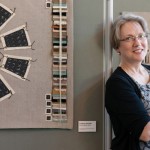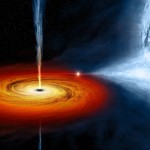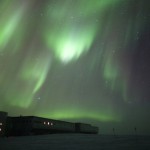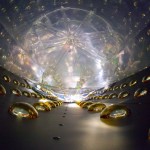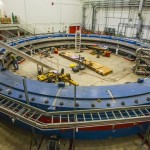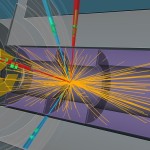Symmetry features
Deep in the dense core of a black hole, protons and electrons are squeezed together to form neutrons, sending ghostly particles called neutrinos streaming out. Matter falls inward. In the textbook case, matter rebounds and erupts, leaving a neutron star. But sometimes, the supernova fails, and there’s no explosion; instead, a black hole is born. Scientists hope to use neutrino experiments to watch a black hole form.
Finding a small discrepancy in measurements of the properties of neutrinos could show us how they fit into the bigger picture. One of those properties is a parameter called theta13. Theta13 relates deeply to how neutrinos mix together, and it’s here that scientists have seen the faintest hint of disagreement from different experiments.
It survived a month-long journey over 3,200 miles, and now the delicate and complex electromagnet is well on its way to exploring the unknown. The Muon g-2 ring has successfully cooled down to operating temperature and powered up, proving that even after a decade of inactivity, it remains a vital and viable scientific instrument.
The CMS and ATLAS experiments combined forces to more precisely measure properties of the Higgs boson. Sticking with the philosophy that two experiments are better than one, scientists from the ATLAS and CMS collaborations presented combined measurements of other Higgs properties at the third annual Large Hadron Collider Physics Conference in St. Petersburg, Russia.


